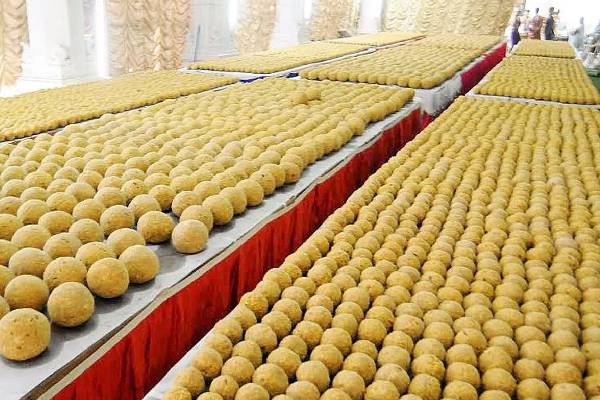The Tirumala Venkateswara Temple is world-renowned, not only for its spiritual significance but also for its iconic prasadam, the Tirupati Laddu. This sweet delicacy has become a symbol of the temple, deeply rooted in its traditions for over 300 years.
The Historical Significance of Tirupati Laddu
The Laddu offering has been a tradition since the time of the Pallavas and was later formalized under Vijayanagara rule. Over centuries, the Laddu evolved into its current form, with the first round-shaped prasadam introduced in 1940. This sacred sweet has become synonymous with a visit to Tirumala, and no pilgrim returns home without distributing it to family and friends.
Ingredients and Mass Production
The preparation of the Tirumala Laddu involves a large-scale production process. Daily, approximately 1 tonne of besan, 10 tonnes of sugar, 700 kg of cashew nuts, 500 kg of sugar candy, and 300-500 litres of ghee are used. Despite such large quantities, the Laddu maintains its unique taste and aroma, thanks to the unchanged traditional recipe, known as the “dittam.”
Over time, modern techniques were introduced. Since 1984, LPG replaced firewood in the kitchens, and today, around 2.5 lakh Laddus are prepared daily, especially during peak seasons and festivals like Ugadi. However, maintaining the Laddu’s original taste in such massive quantities remains a challenge.
To maintain quality, the TTD has revised the ingredient proportions (dittam) several times. Furthermore, the Laddu gained Geographical Indication (GI) status in 2009 to protect its authenticity and prevent unauthorized sellers from exploiting its reputation.
Types of Laddus
Three types of Laddus are offered at Tirumala: the Asthanam Laddu, prepared during special festivals and distributed to dignitaries; the Kalyanotsavam Laddu, given to devotees participating in Arjitha Sevas; and the Proktham Laddu, available to all pilgrims after darshan.
Recently, three batches of ghee underwent testing, and the results reflected varying degrees of compliance with the Food Safety and Standards Authority of India (FSSAI) guidelines.
1. Batch TN02BB 2070 : The ghee had a milk fat content of 99.62%, surpassing the standard requirements. The moisture content was minimal at 0.124%, ensuring a long shelf life. However, several fatty acids were below the quantification limit, potentially affecting flavor intensity.
2. Batch TN02BB 2151: The milk fat percentage was 99.68%, and moisture content was low at 0.104%. However, thesaponification value exceeded the permissible limit, indicating an altered fat composition, which might impact the quality.
3. Batch TN02BA9459 : Despite being within acceptable limits for fatty acid levels, this batch displayed high β-sitosterol content, indicating potential contamination.
Areas of Concern:
1. Saponification Value: Two batches (TN02BB 2151 and TN02BA9459) showed saponification values slightly above the FSSAI limit (205-235), which can indicate an altered fat composition. While this is not a critical failure, it may impact the texture or taste of the ghee.
2. β-Sitosterol: Found in high levels in two batches (TN02BA9459 and TN02BB 2151), this plant sterol should be absent in pure milk fat, suggesting possible contamination or adulteration.
3. Fatty Acid Profile: Some samples had out-of-range fatty acid levels, such as Lauric Acid and Linoleic Acid, which could affect the ghee’s flavor or consistency.
4. Palmitic Acid: One batch (TN02BA9459) showed a higher than acceptable palmitic acid level (40.26% compared to the standard 38%), which may affect the ghee’s quality.
The Tirumala Srivari Laddu is not just a prasadam but a symbol of the temple’s heritage, devotion, and tradition. Despite the challenges of mass production and changing tastes, the Laddu continues to be beloved by crores of devotees who visit the temple every day.
-Sanyogita


































